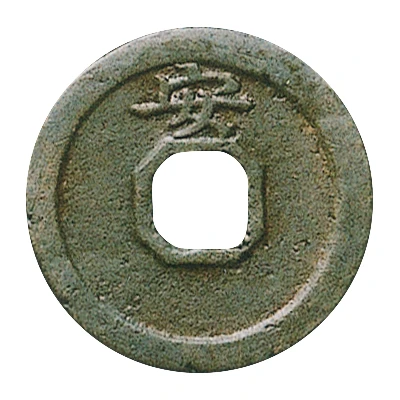


© Ginza Coins
1 Mon "Hakodate-tsūhō" Bosen; round hole ND
1856 year| Copper (Copper alloy) | - | - |
| Issuer | Ezo Territory (Japanese feudal domains) |
|---|---|
| Type | Pattern |
| Year | 1856 |
| Value | 1 Mon |
| Currency | Mon (1856-1864) |
| Composition | Copper (Copper alloy) |
| Shape | Round with a round hole |
| Technique | Cast |
| Orientation | Medal alignment ↑↑ |
| Demonetized | Yes |
| Updated | 2024-10-06 |
| Numista | N#290630 |
|---|---|
| Rarity index | 100% |
Reverse
A character above hole, indicates Ansei era
Lettering: 安
Translation: An
Interesting fact
One interesting fact about the Pattern 1 Mon "Hakodate-tsūhō" coin is that it was minted during a time of significant cultural and economic change in Japan. The coin was produced in 1856, just a few years after the country's isolationist policies were relaxed, allowing for increased trade and cultural exchange with the Western world. This period saw the introduction of new technologies, ideas, and influences that would shape the country's future, and the coin reflects this shift in various ways, such as its use of a Western-style round hole and the incorporation of foreign materials like copper.



